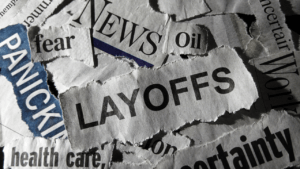Three weeks ago I was back visiting my mum in Stockholm, and was promptly reminded by old comrades there about the 30th anniversary of the Swedish devaluation/floating of the Krona/expulsion from ERM (delete as appropriate). I will readily confess that it actually didn’t seem that long ago, but there you go – time passes quickly when you are having fun. It was neither the best of times, nor the worst of the times, but it most certainly was the most interesting of times.
Back then in the autumn of 1992, I was working in Brussels for a large proprietary trading group, managing an extremely sizeable, highly levered portfolio in Swedish fixed income. For those of you with selective memory, or of a younger disposition, this was a time when European currencies were being knocked over like bowling pins every other week as they exited the prevailing fixed currency regime. Unlike their more distant Mediterranean relatives, and their British cousin, the Scandinavian siblings didn’t just raise the white flag at the first sign of trouble, but actually put up a very decent fight before capitulating, and no-one fought harder than the Swedes.

In practical terms for the world’s oldest central bank, that meant raising short rates to a staggering 500% under the leadership of Bengt Dennis, a man who bore more than a passing resemblance to another central banking legend – Paul Volcker. Five-hundred-percent – I want you to think about it for a second or two…it’s a number so far off what any conventional risk-model is expected to capture, that it really tested those first, embryonic attempts of VaR, Value-at-Risk for those of you not familiar with the term, models to the absolute max. Not surprisingly there were casualties. Lots of them. For those of us who not only survived, but actually thrived in that environment, there are many happy memories, for those foolish enough to have taken out floating rate mortgages during a fixed currency regime, replace “happy memories” with “lessons learned”.

“The sky is the limit”
For the younger of you who have seen big moves in stocks like Gamestop, or the occasional wild-west day in Cryptos, and think you can handle volatility – let me tell you that nothing really prepares you for the morning when the screens are telling you the central bank is hiking rates by 375% (to 500% from a far more moderate 125%). Only a thorough understanding of risk management keeps you in the game when those things happen. At the time you had plenty of reasons to be long one-year t-bills yielding 30% – inflation was crashing even quicker than the housing market or the broader economy, and unemployment was moving higher at an exponential rate. Funding them at 500% makes it a slightly different proposition however, because that wicked Wednesday night end up costing you about 3.5% in yield on those t-bills when you are forced to fund the 3-day week-end. For those looking at shorting them for all that juicy carry, the economic reality certainly made you think twice, because at some point even the Riksbank would surely have to blink ?
In the end, all’s well that ends well, and it was a truly fantastic time. The discipline that kind of market instilled in you as a portfolio manager has stayed with me, and the strong focus on protecting the downside has allowed me to stay in this game for more than 30 years. It does not mean you shouldn’t take risks, far from it, but it does mean you shouldn’t take risks that will not allow you to keep playing the game. When managing portfolio risk, you need to have the ability and mindset to survive the equivalent of the Riksbank’s heroic, but misguided, and ultimately futile attempt at defending the Swedish fixed currency regime – you need to be able to survive the 500%.
This takes us to the meeting tonight, and Jerry Powell’s risk management skills. I have, as most of you know fairly well by now, not been overly impressed by them, and the coming festive season is going to test them even further. They will no doubt hike by a more tempered 50 bps tonight, and yesterday’s inflation print means that the negative real rate is only 3% – some tightening cycle indeed. The problem is that this ramping higher of short rates is happening when the economy is slowing quite rapidly and there are multiple, increasing signs of distress. Even if they were to stop here, and they might, the reactive fashion in how they have been conducting monetary policy means the damage has in some sense already been done, particularly to real-estate, not to mention their credibility. This takes us to the dilemma he and FOMC is facing here. It’s a classic risk management problem – keep tightening and run the risk of a recession, and perhaps a severe slowdown in inflation, causing fed-watchers and others of accusing you and your colleagues of monetary overkill (and by extension of sheer incompetence). Stop tightening pre-maturely, and inflation does not roll over as expected down the road, but re-accelerates, and you have a guaranteed recession/possible depression on your hands when you, reluctantly, are forced to start raising rates again to levels much higher than what would have been required first time round. They are essentially now having to ask themselves how they are going to stay in the game.
I don’t exactly envy Jay & Co’s position, but they’ve made their bed, and where they spend the night is frankly not really a concern of mine. The opportunities and trading environment they are creating is however, and for that I’m deeply grateful, and my book much indebted. While the FOMC is procrastinating, markets are really clinging onto all the dovish signals they have worked so hard to find, but strains are increasingly showing in both bonds and stocks. Position wise, let me reiterate what I’ve said all year – this is a bear market and it should be traded as such. Keep exiting longs when the market allows you and, for those with the ability to short the market, keep selling these wonderful little bear-market rallies like yesterday’s pop on the CPI number. They truly are the gift that keeps giving. Most companies you want to own, those producing genuinely needed goods and services, are unfortunately mostly higher in price now than twelve months ago, but do try to pick them up when they actually sell off – because you have to. They are the ones you want to own in 2023 as well, and will most likely be the only place to hide, but as we are in a bear market, be selective and greedy when you do buy.
For those of you who think inflation is transitory, like the Fed last year, and believe the Ukraine war, supply chains, and the bounce-back from Covid is responsible for the most elevated inflation prints in 40 years, I only have one advice. You need to think about resource scarcity in the context of 500% short rates. Use your risk management skills when you position, and whatever you do, or trades you put on, make sure the risk you run allows you to stay in the game no-matter-what-the market-throws-at you. Climate change will ensure there are going to be more than a few curve balls thrown at you. It means even the best of portfolio managers will get properly tested in 2023 as well.



